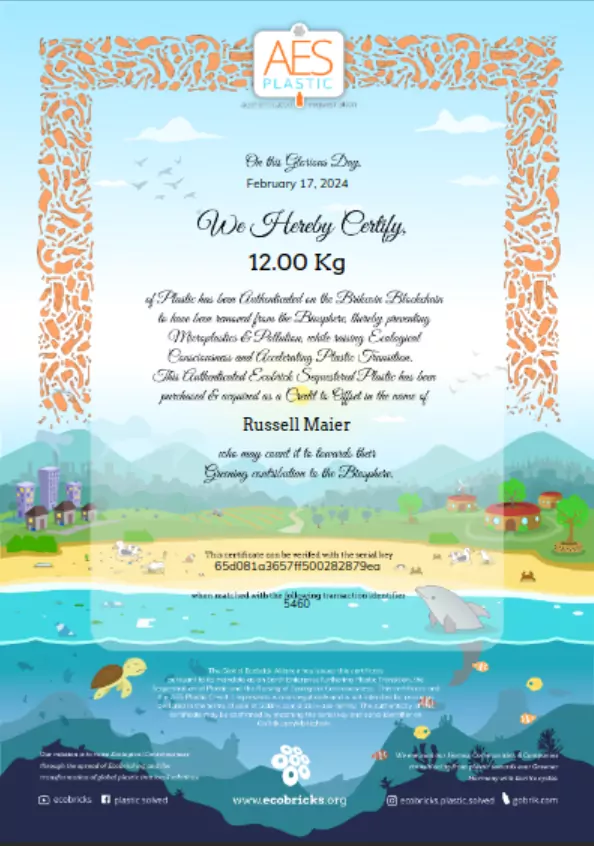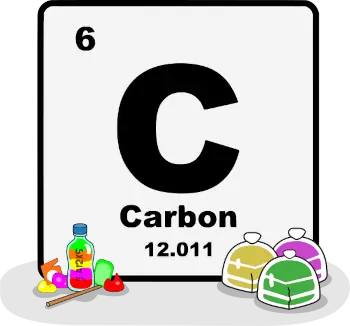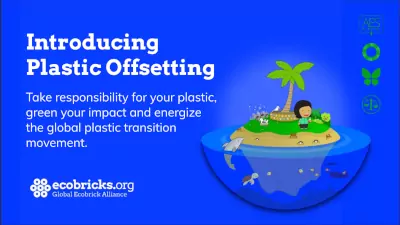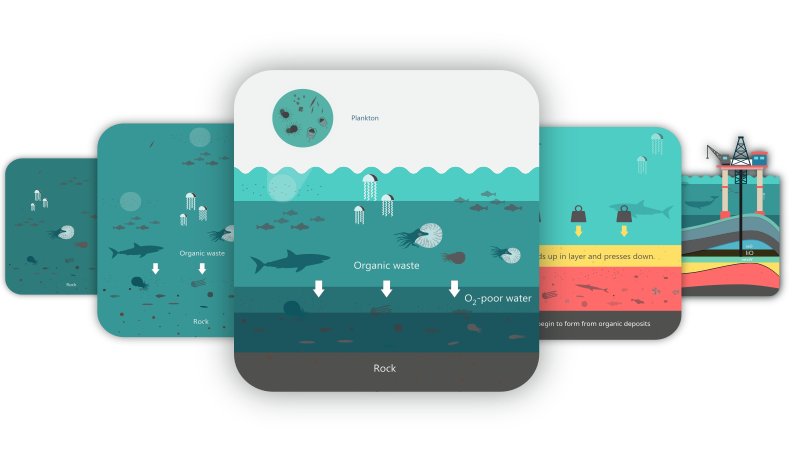We live in an age where its almost impossible to avoid plastic. Nonetheless, the plastic that we use today will have an ecological impact for ages to come. By taking responsibility for our plastic today, we can ensure that tomorrow, our overall impact is green.
And plastic offsetting is a place to start!
Offsetting is all about making sure our green impacts outweigh our grey. Just as keen green households and companies buy carbon offset credits, so too can they buy plastic offset credits. Whereas carbon credits help balance off our emissions, plastic offsets can be purchased to balance our plastic consumption and production. Paying for offset credits serves as strong financial incentive for buyers to reduce and eliminate their plastic use altogether.
Meanwhile, payments go direct to energizing those working hard to sequester plastic and transition from it.
Like Carbon Offsetting— but for plastic!
If curbing CO2 emissions are an important part of being green― so too is curbing our plastic polluting.
In carbon offsetting, "credits" correspond to carbon that has been sequestered― for example by tree planting or coral restoration projects. Such projects energize systems that capturing, concentrate and secure kilograms of carbon dioxide.
In the same way, plastic offset credits correspond to plastic that has been captured, concentrated and secured. These sequestered plastic credits are also measured in kilograms (significantly, plastic itself is on average ).
Ecobricking is ideal for sequestering plastic. Ecobricking not only captures, secures and sequesters plastic, it also energizes the reduction in consumption and production of plastic of those involved― a phenonmenon called plastic transition.
Not all that is green is green
In order for ecobricked plastic to be considered sequestered, it must be done to specific standards― and verified as such!
Just as not all planted forests represent ecological enrichment (i.e. monoculture 'green-desert' forests) not all plastic that is packed is of ecological value. In order to be considered effectively sequestered, packed plastic must meet the criteria of plastic sequestration. These criteria are based on the principles of Earthen ethics, and are part and parcel of generally accepted ecobricking standards which the Global Ecobrick Alliance maintains and represents.
ℹ️ Wikipedia: Plastic Sequestration.
ℹ️ Wikipedia: Definition of an Ecobrick
The Role of the GEA
The Global Ecobrick Alliance maintains the blockchain that underlies the plastic offsetting system.
As part of our mission to support local and global plastic transition movements, the Global Ecobrick Alliance (GEA) hosts the GoBrik app to serve ecobrickers around the world. One of the main functions of GoBrik is to authenticate ecobricked plastic. This enables our Brikcoin blockchain which serves as the found for plastic offsetting. We maintain and develop these platforms as a not-for-profit, for-Earth enterprise with full financial transparency.
Offsetting and ecobrick validations are both accessed on our Gobrik app. There, ecobricker peers validate whether logged ecobricks meet the criteria of plastic sequestration. Ecobricks that are authenticated are recorded on the Brikcoin blockchain. Their Authenticated Ecobrick Sequestered plastic (AES)then becomes available for purchase as offset credits.
Upon purchase, the GEA issues a serialized certificate for the amount of plastic offsets paid for. The transaction is recorded automatically on the brikchain and the GEA's Open Books accounting system. Finally, the buyer's account is credited with their AES plastic offset credits and a serialized PDF certificate is issued.
How is the price of offsets determined?
The price of 1kg of AES plastic is determined by the cost of its authentication
To calculate the price of 1kg of authenticated plastic, the Global Ecobrick Alliance divides its costs of operating and maitaining the blockchain by the amount of plastic that has been authenticated.
For example: In 2023 the Global Ecobrick Alliance incurred 7,207.14 $ USD of expenses in order to authenticate 2,228.96 Kg AES of ecobricked plastic. That works out a cost of 3.23 $ USD per Kg in maintaining the block chain and authentication system. This sets our valuation of the price per Kg of AES plastic offsets for the subsequent year (2024).
ℹ️ View our GEA Open Books
ℹ️ Learn more about Plastic Sequestration
How do ecobrickers benefit?
Plastic offsetting values the hard work of ecobrickers around the world. In turn, we serve them and valorize their work.
Our system is carefully designed so that everyone benefits! Especially, the planet. But, also, especially ecobrickers. Afterall, it is ecobrickers who are doing the hard work of packing plastic and validating ecobricks.
Our platforms are designed so that there are five main ways that ecobrickers benefit from plastic offseting:
- When an ecobricker logs an ecobrick and this ecobrick is authenticated, they earn validation credits which allow them to validate other ecobrickers ecobricks. Their balances accrues with every ecobrick they log and which is authenticated.
- Using their validation credits, ecobrickers can validate the ecobricks of others on the system. When a validator participates in the successful authentication of an ecobrick, they (and the other two validators who were part) are issued Brikcoins commensurate to the amount of plastic contained in the authenticated ecobrick (see our brikcoin page for a full description of this process). The brikcoins that are earned have a value in of themselves and can be exchanged on the GoBrik platform for regular currency, for ecobricks or for offsets.
- The process of validating ecobricks leads to high quality ecobricks. These ecobricks are far better to build with giving them higher utility value. This is a big help for ecobrickers who are building! Because serialized ecobricks can be looked up, builders can be sure to acquire only quality ecobricks for their projects.
- Because authenticated ecobricks are known to be of high quality, ecobrickers can receive much higher market value for them should they wish to exchange them! Only authenticated ecobricks can be exchanged on the GoBrik platform.
- Every authenticated ecobrick is recorded on the Brikchain manual blockchain. Every single ecobrick that is authenticated can thus be looked up by its serial number to learn its status and orginating information. This adds both greater utlity and historical value to an ecobricker's work.
Most importantly, the cash value of plastic offset credits goes direct to the Global Ecobrick Alliance which uses the funds to maintain Ecobricks.org, the GoBrik app and Brikcoin blockchain. These sites and apps serve ecobrickers around the world.
The GEA is structured as a not-for-profit, Earth enterprise precisely so that it can fulfill this purpose and maintain these systems to serve and benefit ecobrickers locally and globally. All the GEA's expenses and revenues are declared on our open books system so that not only do we operate with full transparency, but also, so that the annual price of 1kg of AES plastic can be set with full transparency.
ℹ️ Learn more about: Brikchain Manual Blockchain
ℹ️ Learn more about: The Global Ecobrick Alliance
What can I do with my offset credits?
Offsetting is can be a key component of green living and green enterprise
Plastic offset credits are ideal for use in household and enterprise ecological accounting. For companies conducting annual sustainability or regenerative reports, plastic offseting can be used both to compensate for plastic generation and CO2 emissions during the year of purchase.
When plastic offsets are purchased, the Global Ecobrick Alliance issues a serialized certificate of the net weight in kilograms of the purchase. Both the currency transaction and the offsetting credits are recorded in our open books accounting system and our brikcoin blockchain.
The certificate and transaction links are ideal to be used as references in your regenerative or sustainability accounting. You can use your purchased plastic credits to balance off either your plastic consumption or production. You can use the CO2 equivalency of your purchased offset credits to balance your CO2 emissions.

ℹ️ Learn more about: Authenticated Ecobrick Sequestered Plastic
White Paper & Resources
Learn more about the manual blockchain powering our plastic offsetting.
On Earth Day 2020, the GEA released version 1.0 of the Ecobricks & Brikcoin Whitepaper, on The Commodification of Manually Sequestered Plastic. This document lays out the foundational architecture of the Brikcoin blockchain and our system of AES plastic offsets. Our white paper provides an overview of technical framework of plastic offsetting and the science and philosophy upon which it is based.
📥 Download: The Commodification of Sequestered Plastic
📄 GEA White Paper | PDF | 2.1 MB
The Brikcoin blockchain has been operating since 2019 and has overseen the authentication of hundreds of tons of plastic and tens of thousands of dollars of plastic offsetting.
Offset your plastic today!
Get started with your personal or enterprise plastic offsetting with us on our Gobrik platform. Offsets go direct to valorizing of the work of ecobrickers around the world and the costs of the Global Ecobrick Alliance to maintain and develop the platform.
🚀 Offset your Plastic
⇗ Launch the GoBrik web app

Plastic is Carbon
Plastic is largely made from ancient carbon biomass that was sequestered for millions of years under the earth. By molar mass PP, LDPE, HDPE, and PE plastic are 85.6% carbon. PET is 62.5% carbon and Polystyrene is 92.3%.
🔢 Calculations
Click for a Quick Info

Plastic has a CO2e Footprint
If plastic is allowed to degrade or burn, its carbon breaks down and forms CO2 with the air. Burning 1 kg of polyethylene (PE) results in approximately 3 kg of CO2.
🔢 Calculations
Hover to learn more.

AES Offsetting Presentation
Download our PDF slide deck that provides a comprehensive overview of offsetting plastic through the GEA.
📄 AES Presentation
3.8 MB PDF download

Global Ecobrick Alliance
The GEA is dedicated to accelerating plastic transition. We preside over the GoBrik app and the Brikcoin blockchain.
Learn More




